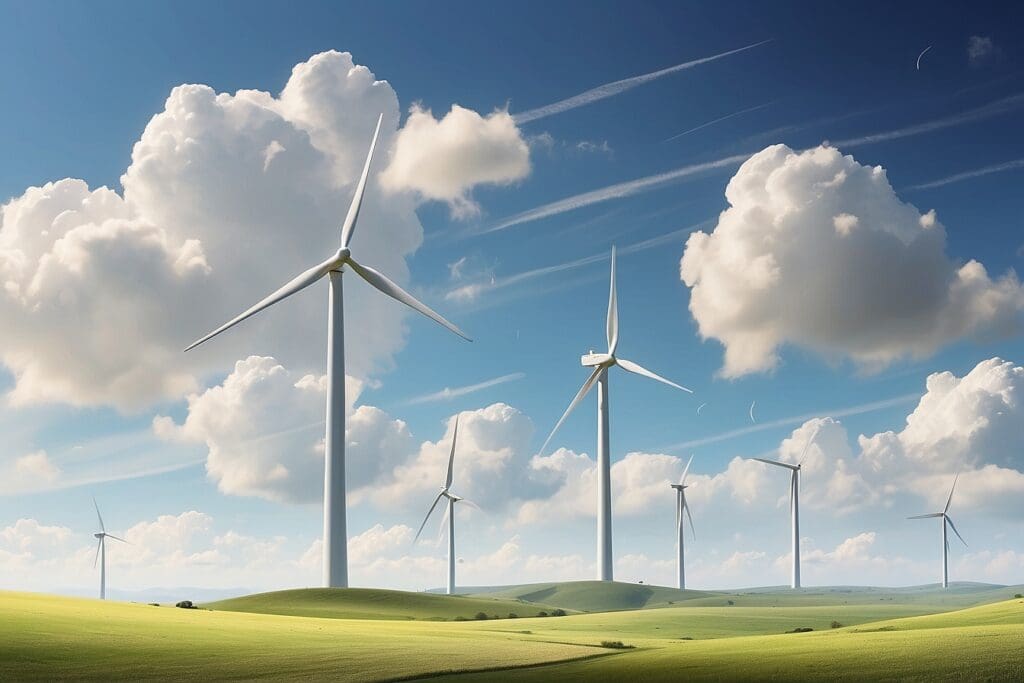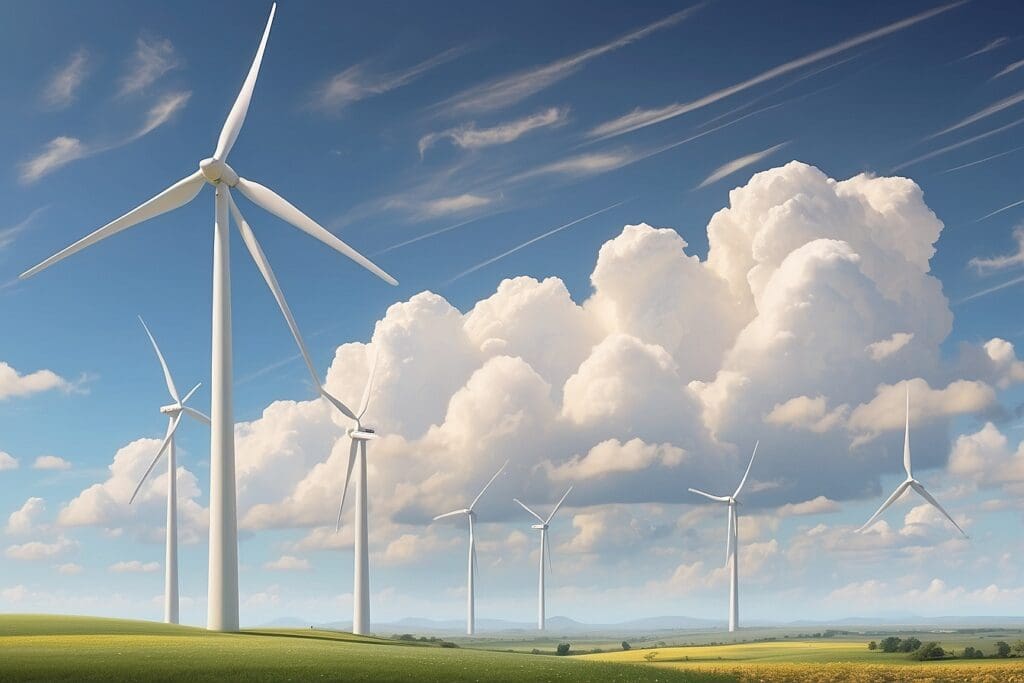Wind energy is becoming a popular alternative to fossil fuels because it is plentiful, renewable, widely distributed, clean, and produces no greenhouse gas emissions. The use of wind as a power source has been around for thousands of years. Historically, it has been used across the world to pump excess water off of flooded land, to saw-mill timber and process spices, tobacco, cocoa, paints, and dyes, and to provide water to livestock and home developments. More recently, however, the windmill has been refined to be used as an electricity source. In 2008, wind power produced about 1.5% of worldwide electricity usage and is growing at a rapid rate.1 Most of the wind power generated across the world is produced on large-scale wind farms, but residential wind power is becoming more accessible. Residential wind turbines have been installed in 47 States in the U.S. because it can save up to 90 percent on electricity bills, it creates no emissions, and it can offset pollution that would otherwise be generated by your local utility company.
How Residential Wind Power Works
A residential wind turbine is installed on top of a tall tower that collects kinetic energy from the wind and converts it into electricity. According to American Wind Energy Association (AWEA), “In a normal residential application, a home is served simultaneously by the wind turbine and a local utility. If the wind speeds are below cut-in speed (7-10 mph) there will be no output from the turbine and all of the needed power is purchased from the utility. As wind speeds increase, turbine output increases and the amount of power purchased from the utility is proportionately decreased. When the turbine produces more power than the house needs, the extra electricity is sold to the utility. All of this is done automatically. There are no batteries in a modern residential wind system.”2 Therefore, it is suggested to access the amount of wind you have in your area before investing in a residential wind turbine. The goal is to have at least 10 mph wind speed near your home and most residential wind turbines are suggested for use on a one acre-sized lot, at the very least. Because of this criterion, most of the residential wind turbines in the United States have been installed in the Northeast and Midwest. Small wind systems for remote areas are also available but work differently than residential wind turbines.
Benefits for You

Residential wind turbines are a very low maintenance way to potentially save a lot of money on utility bills. The turbines make very little noise, operate automatically, can be retrofitted to any home, and can last up to 20 years with little to no maintenance. However, the amount of money a small wind turbine saves you will depend upon its initial cost, the amount of electricity you use, the average wind speed at your site, and other factors.3 An average turbine can cost anywhere from $6,000 to $22,000 installed and that investment can be recouped through utility savings in at least 6 years. In a site with ideal wind conditions, a turbine can save you from 50 to 90 percent on electricity bills. After you recoup the cost of the turbine itself, your electricity bills will be little to nothing.
Benefits for the Environment
Although the financial benefits of residential wind power to you are substantially rewarding, the environmental benefits are also appealing. The American Wind Energy Association (AWEA) predicts that, “Over its life, a small residential wind turbine can offset approximately 1.2 tons of air pollutants and 200 tons of greenhouse gases.”4 Wind turbines require no fuel and release no pollution. Although energy is consumed to manufacture and transport them, these emissions are “paid-back” within several months of use. Wind turbines also require very little space compared to their energy output. For large scale wind farms, it has been noted that, “With today’s technology, wind energy could provide 20% of America’s electricity (or about the amount nuclear power provides) with turbines installed on less than 1% of its land area. And within that area, less than 5% of the land would be occupied by wind equipment-the remaining 95% could continue to be used for farming or ranching.”5
Because residential wind power is mutually beneficial for you and the environment, it only makes sense that it is one of the world’s fastest growing energy sources. If you are interested in investing in wind power for your home, below are some resources to get you started:
• The U.S. Department of Energy offers a tool to assess the amount of wind on your land and locating existing wind projects: http://www.windpoweringamerica.gov/where_is_wind.asp.
• The AWEA provides State-by-State information for buying and installing residential wind power: http://www.awea.org/smallwind/states.html.
• The AWEA also provides a list of wind turbine providers: http://www.awea.org/smallwind/smsyslst.html.
• For general wind information, visit the AWEA’s website: http://awea.org/.


